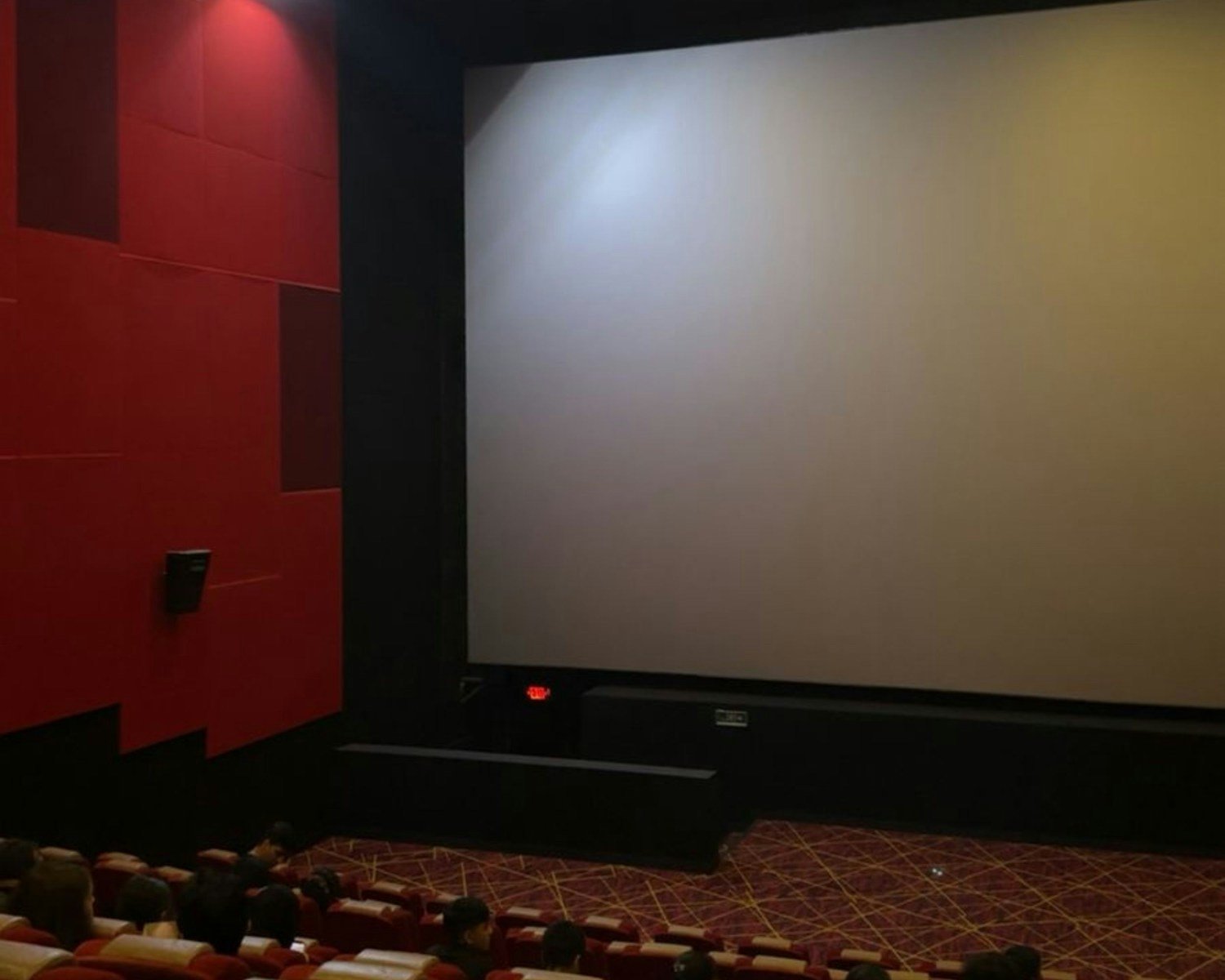When it comes to premium movie experiences, the battle between Dolby Cinema and IMAX continues to evolve. Movie fans often debate which format delivers the best overall experience for their hard-earned money. Each offers distinct advantages that can significantly impact how you enjoy the latest blockbusters.
Dolby Cinema focuses on delivering superior contrast, vibrant colors, and immersive sound, while IMAX emphasizes larger screens and enhanced resolution to create a more epic viewing experience. The choice between these formats often comes down to personal preference and the specific movie you’re watching. Some films are specifically formatted for IMAX’s larger aspect ratio, while others benefit more from Dolby’s advanced HDR capabilities and precision audio.
Comfort is another important factor to consider. Dolby Cinema typically features wider, more luxurious reclining seats with better spacing, creating a more comfortable viewing environment. IMAX theaters, while offering impressive scale, sometimes sacrifice some comfort to accommodate the massive screen and larger audience capacity.
Dolby Cinema vs IMAX
When moviegoers want the ultimate big-screen experience, two names dominate the conversation: Dolby Cinema and IMAX. Both promise breathtaking visuals, immersive sound, and a premium feel—but they achieve it in very different ways. In 2025, the debate is still alive: which one is better? Let’s break it down.
Dolby Cinema vs IMAX: Quick Comparison (2025)
| Feature | Dolby Cinema | IMAX |
|---|---|---|
| Screen Size | Standard widescreen (2.40:1) | Massive floor-to-ceiling, up to 1.90:1 or 1.43:1 |
| Projection | Dolby Vision dual-laser HDR | Dual 4K laser (or 70mm film in select theaters) |
| Visual Strength | Deep blacks, vivid colors, high contrast | Sheer scale, expanded vertical image |
| Sound System | Dolby Atmos (object-based, 360° precision) | IMAX proprietary surround (powerful, immersive) |
| Seating | Luxury recliners, spacious comfort | Varies by theater, some recliners, some standard |
| Immersion Style | Precision and detail | Size and spectacle |
| Availability | Limited (mainly AMC theaters) | Widely available worldwide |
| Cost | Slightly higher | Slightly lower |
| Best For | Story-driven, CGI-rich, or visually detailed films | Blockbusters, epics, and IMAX-filmed movies |
1. Visual Experience
IMAX
- Screen Size & Aspect Ratio: IMAX is famous for its towering screens, some stretching floor-to-ceiling and wall-to-wall. Many IMAX theaters use a 1.90:1 or even 1.43:1 aspect ratio, giving you more vertical image than standard formats.
- Projection Technology: IMAX uses dual 4K laser projectors (sometimes 70mm film in select locations), producing brighter and sharper visuals.
- Best For: Large-scale blockbusters (sci-fi, action, nature documentaries) where size and immersion matter most.
Dolby Cinema

- Projection Technology: Dolby Vision dual-laser projection delivers ultra-high contrast, deeper blacks, and vivid colors. HDR (High Dynamic Range) is Dolby’s biggest strength.
- Aspect Ratio: Standard 2.40:1 widescreen, so you don’t always get the expanded vertical image that IMAX offers.
- Best For: Visually rich films (dramas, animated features, sci-fi with heavy CGI) where color accuracy and detail are crucial.
Verdict: IMAX wins on sheer size and immersion, while Dolby Cinema wins on contrast and color precision.
2. Audio Experience
IMAX
- Uses a proprietary sound system with powerful speakers behind the screen and around the theater.
- Delivers loud, immersive sound, but less precise in object-based placement compared to Dolby.
Dolby Cinema
- Features Dolby Atmos, an object-based audio system with speakers overhead and throughout the room.
- Creates pinpoint accuracy—raindrops sound like they’re falling above you, and voices can move across the room seamlessly.
Verdict: Dolby Cinema offers more precise and immersive audio, while IMAX emphasizes raw power.
3. Seating & Comfort
- IMAX: Seating varies by theater; some use standard stadium seating, others upgraded recliners. Comfort depends on the venue.
- Dolby Cinema: Almost always includes luxury recliners, wider spacing, and premium amenities like gourmet food options (especially at AMC locations).
Verdict: Dolby Cinema is consistently more comfortable.
4. Availability
- IMAX: Widely available worldwide, often in major multiplexes and standalone theaters.
- Dolby Cinema: More limited, mostly at AMC theaters in the U.S. and select locations globally.
Verdict: IMAX is easier to find, while Dolby is more exclusive.
5. Cost
- IMAX: Prices vary, but usually slightly cheaper than Dolby Cinema.
- Dolby Cinema: Often a few dollars more per ticket, reflecting the premium seating and Atmos experience.
6. Which Should You Choose in 2025?
- Choose IMAX if: You’re watching a blockbuster designed for IMAX cameras (e.g., Christopher Nolan films, Marvel, or epic documentaries). The massive screen and expanded aspect ratio maximize spectacle.
- Choose Dolby Cinema if: You want the most luxurious experience with stunning HDR visuals, precise Atmos sound, and plush recliner seating. Perfect for story-driven films, CGI-heavy movies, or when comfort matters.
Final Verdict
- For spectacle and scale → IMAX
- For luxury and precision → Dolby Cinema
In 2025, neither format is strictly “better”—it depends on what you value more: size and immersion (IMAX) or comfort and visual fidelity (Dolby Cinema).
Key Takeaways
- Dolby Cinema excels in picture contrast, color accuracy, and immersive sound quality while IMAX delivers larger screens and enhanced resolution.
- Seating comfort differs significantly with Dolby offering more spacious reclining seats compared to IMAX’s standard theater seating.
- The best choice depends on the specific movie you’re watching, as some films are specially formatted for IMAX while others benefit more from Dolby’s HDR capabilities.
Technological Innovations in Dolby Cinema and IMAX
Both Dolby Cinema and IMAX have revolutionized the theatrical experience through cutting-edge technology that enhances visual and audio elements beyond traditional cinema offerings.
Dolby Cinema’s Laser Projection and Visual Advancements
Dolby Cinema utilizes advanced dual laser projection systems that deliver superior image quality with exceptional contrast ratios and color reproduction. These projectors can display deeper blacks and more vibrant colors than most competing technologies.
The system supports Dolby Vision, which provides a wider color gamut and increased brightness levels that standard projectors cannot match. This technology allows filmmakers to present their work with greater detail in both dark and bright scenes.
Contrast is a standout feature in Dolby Cinema. The advanced HDR (High Dynamic Range) capabilities create a more realistic viewing experience by presenting both shadows and highlights with remarkable clarity.
Dolby’s visual technology is designed to eliminate common projection issues like ghosting or color bleeding, resulting in sharper images across the entire screen.
The Evolution of IMAX Theaters
IMAX began with 70mm film projection on massive screens but has evolved to incorporate digital technology. The latest IMAX with Laser systems represents their most advanced offering for theatrical exhibition.
These new IMAX systems feature proprietary 4K laser projectors specifically engineered for their uniquely large screens. The technology delivers enhanced brightness necessary to illuminate the significantly larger screen surface area.
IMAX’s approach prioritizes immersion through sheer scale. Their screens can reach heights of up to 100 feet, creating a field of view that fills peripheral vision and draws viewers into the action.
Recent IMAX innovations have focused on improving their audio experience, though many experts still consider Dolby Atmos superior in this regard. IMAX theaters typically feature a 12-channel sound system optimized for their unique theater geometry.
The signature IMAX aspect ratio (1.90:1 or even 1.43:1 for select venues) allows directors to showcase up to 26% more image than standard theaters, particularly during sequences filmed with IMAX cameras.
Sound Technology Comparison
Sound technology is a crucial element that distinguishes premium cinema formats. Both Dolby Cinema and IMAX have developed sophisticated audio systems that transform how audiences experience films.
The Immersive Experience of Dolby Atmos
Dolby Atmos represents a revolutionary approach to cinematic sound. Unlike traditional surround sound, Atmos creates a three-dimensional audio space where sounds can be precisely placed and moved around the theater.
The system uses overhead speakers in addition to traditional surround speakers, allowing sound designers to create truly immersive soundscapes. This means raindrops can fall from above, aircraft can fly overhead, and whispers can come from behind.
Dolby Atmos supports up to 128 simultaneous audio objects and can output to 64 individual speakers. This precision creates what many consider the most lifelike audio experience available in theaters today.
The technology also excels in dynamic range, providing both whisper-quiet moments and powerful bass without distortion. This enhanced clarity helps viewers catch every detail of dialogue even during action sequences.
IMAX Audio: Enhancing the Cinematic Experience
IMAX audio technology focuses on power and precision to complement its massive screens. The proprietary sound system uses a combination of laser-aligned loudspeakers and patented amplification.
IMAX theaters feature specialized room calibration that accounts for each venue’s unique acoustic properties. This ensures consistent sound quality regardless of theater size or construction.
While IMAX doesn’t utilize ceiling speakers like Dolby Atmos, it compensates with powerful bass delivery. The system excels at reproducing the deep rumbling sounds that accompany action sequences or dramatic musical scores.
IMAX sound formats have evolved over time, with the latest versions offering improved dynamic range and clarity. Many filmmakers specifically optimize their soundtracks for IMAX presentation, taking advantage of the format’s audio capabilities.
Recent IMAX theaters have narrowed the quality gap with Dolby, though most experts still consider Dolby Atmos superior for directional sound precision and overall immersion.
Frequently Asked Questions
Moviegoers often wonder about the specific differences between premium cinema formats before buying tickets. These questions address the most common comparisons between Dolby Cinema and IMAX technologies.
What are the key differences between Dolby Cinema and IMAX experiences?
Dolby Cinema offers superior contrast ratios—up to 500 times higher than IMAX—along with better black levels and more vibrant colors. The Dolby experience focuses on precision and quality in a more intimate setting.
IMAX provides a notably larger screen, with formats approximately 40% bigger than standard theaters. IMAX emphasizes immersion through sheer scale and specially formatted content.
The seating differs significantly as well. Dolby Cinema features reserved luxury recliners with more personal space, while IMAX theaters typically use stadium-style seating to optimize viewing angles for their massive screens.
How does IMAX laser technology compare to Dolby Cinema’s visual and audio quality?
IMAX laser projectors deliver exceptional brightness and clarity, particularly beneficial for their enormous screens. They produce sharper images with improved color accuracy compared to older IMAX xenon systems.
Dolby Cinema uses proprietary dual 4K laser projectors that achieve four times the resolution of many IMAX theaters. These projectors excel at Dolby Vision HDR (High Dynamic Range), creating more nuanced contrast and color depth.
For audio, IMAX laser theaters feature their proprietary 12-channel sound system, while Dolby Cinema incorporates Dolby Atmos with up to 64 speakers positioned throughout the theater, including overhead.
What are the benefits of watching a movie in Dolby Cinema compared to a standard movie theater?
Dolby Cinema delivers significantly improved contrast with truer blacks and brighter highlights that standard theaters cannot match. This creates a more lifelike viewing experience with greater depth.
The Dolby Atmos sound system uses object-based audio that places sounds precisely around the theater, including above viewers. Standard theaters typically use channel-based systems with fewer speakers.
Most Dolby Cinema auditoriums include premium amenities like wider, more comfortable reclining seats, better viewing angles, and enhanced theater designs that reduce light reflection and distraction.
How does Dolby Cinema’s sound system differ from IMAX’s audio capabilities?
Dolby Cinema utilizes Dolby Atmos technology, which can direct sounds to specific locations using up to 64 individual speakers. This creates a three-dimensional sound field where audio can move around and above the audience.
IMAX uses a proprietary 12-channel sound system designed specifically for their large format theaters. Their speakers are strategically positioned to maximize impact in their uniquely shaped auditoriums.
Both systems offer powerful bass response, but Dolby’s approach focuses more on precision and subtle audio placement, while IMAX emphasizes power and envelopment that complements their massive visual presentation.
In what ways does screen size and resolution in Dolby Cinema contrast with IMAX presentations?
IMAX screens are significantly larger, with the largest reaching up to 98 feet tall. This creates an immersive field of view that fills more of the audience’s peripheral vision.
Dolby Cinema screens are smaller but still larger than standard theaters. They focus on image quality over sheer size, with specialized screens designed to enhance their projectors’ 4K resolution and HDR capabilities.
Some films are specially formatted for IMAX’s taller aspect ratio, revealing up to 26% more image during key sequences. Dolby Cinema maintains the filmmaker’s intended aspect ratio throughout the presentation.
What aspects should be considered when choosing between viewing a film in Dolby Cinema or IMAX?
The film itself matters significantly—movies shot with IMAX cameras (like many Christopher Nolan films) benefit most from IMAX projection. Films with extensive dark scenes or subtle color gradients often look better in Dolby Cinema.
Theater location and type should be considered. True 70mm IMAX theaters provide a different experience than digital IMAX, while all Dolby Cinemas maintain consistent standards.
Budget is also important. Both formats typically charge premium prices above standard tickets, with prices varying by location and time of day, though they’re generally comparable to each other.







